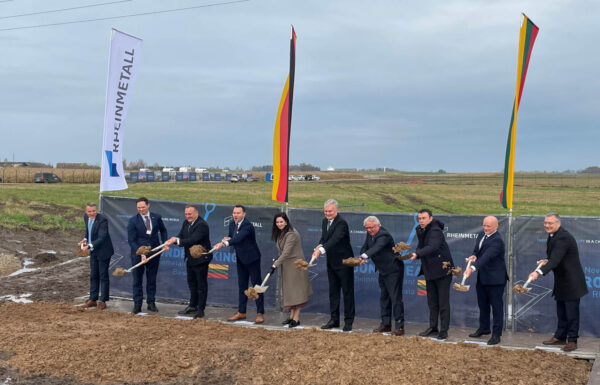WB Group has signed a contract for the delivery of the AMSTA border and critical infrastructure protection system. This advanced Polish solution will be provided to a foreign user, ensuring security over a multi-kilometer area. The AMSTA system, which utilizes seismic sensors, can detect breaches in the protected zone from a long distance, whether caused by people, vehicles, or low-flying helicopters (WB Group presents AMSTA SOF).
Warsaw-based company MindMade, part of the WB Group, has signed a contract for the delivery of a perimeter protection system for borders and critical infrastructure. AMSTA consists of a network of intelligent, self-learning seismic and imaging sensors capable of detecting people and vehicles. The system can be integrated with unmanned platforms and other sensors (AMSTA will protect borders and more).
The foreign customer intends to use the Polish solution to protect a multi-kilometer section of very challenging terrain. The first elements of the modular system with an open architecture will be delivered by the end of 2024. AMSTA is characterized by distributed intelligence, where each component operates independently of the others.
“We are very pleased with the signed contract. The agreement confirms that the solutions developed by Polish engineers are advanced, high-quality, and competitive in the market. Field tests conducted in the recipient’s country confirmed the superiority of the AMSTA system. They provided perimeter protection in very challenging terrain,” said Paweł Poncyljusz, president of the management board of MindMade.
AMSTA is a solution based on artificial intelligence algorithms. It is designed to protect key facilities and areas essential for the secure functioning of the state, such as power plants, airports, border areas, ports, refineries, and raw material warehouses. AMSTA uses neural networks implemented in seismic sensors and advanced image analytics algorithms from visual sensors.
AMSTA provides the user with full situational awareness of the protected area. The system is available in a stationary version, with sensors connected by wires, or in a mobile version, with sensors connected wirelessly. The solution can be customized to specific needs, taking into account local terrain conditions. The AMSTA system’s architecture is resilient to the effects of single failures.
Seismic sensors utilizing artificial intelligence algorithms are highly effective at filtering out animal signatures from those of humans and vehicles. The system indicates the direction from which the breach occurred and where the intruder went, reduces the number of false alarms, and supports image analytics. The sensors are so sensitive that they can also detect low-flying helicopters violating the protected zone.
All data from the sensors is transmitted to a management center. This is a specialized application consisting of modules for configuration and data analysis. It continuously receives information from all system components and visualizes it on a digital map in the form of messages, alerts, videos, and photos.
Press release




































